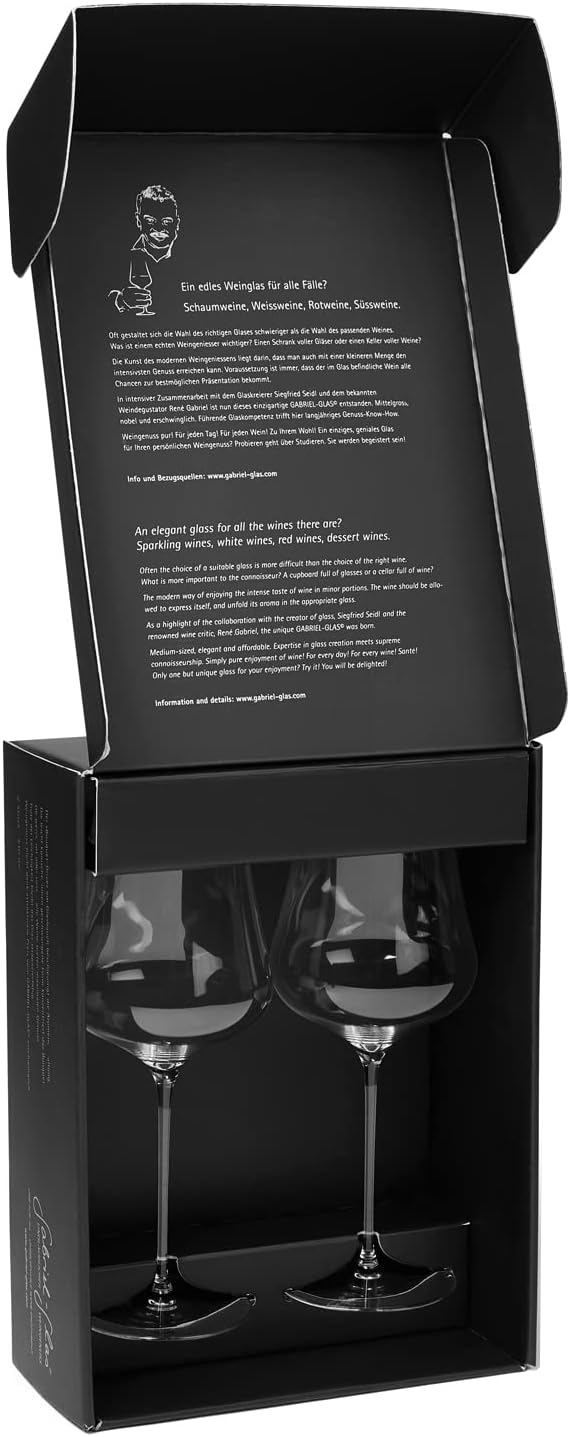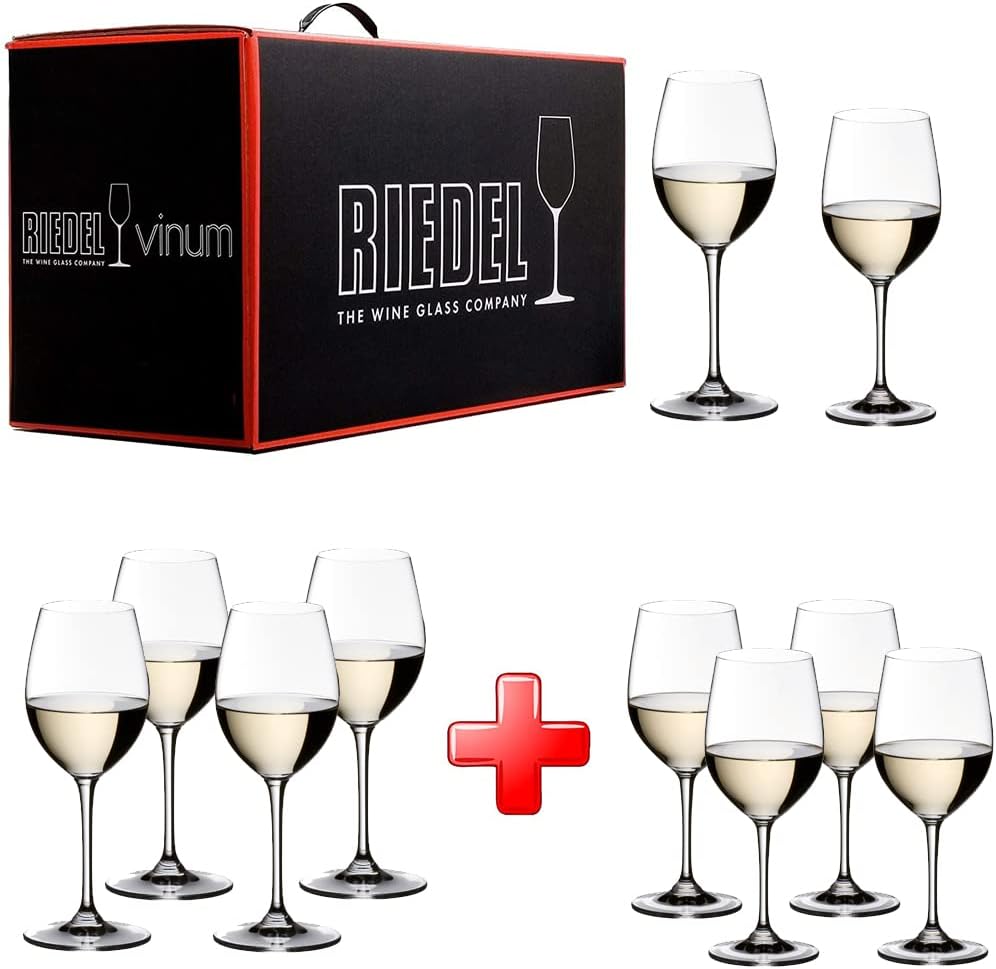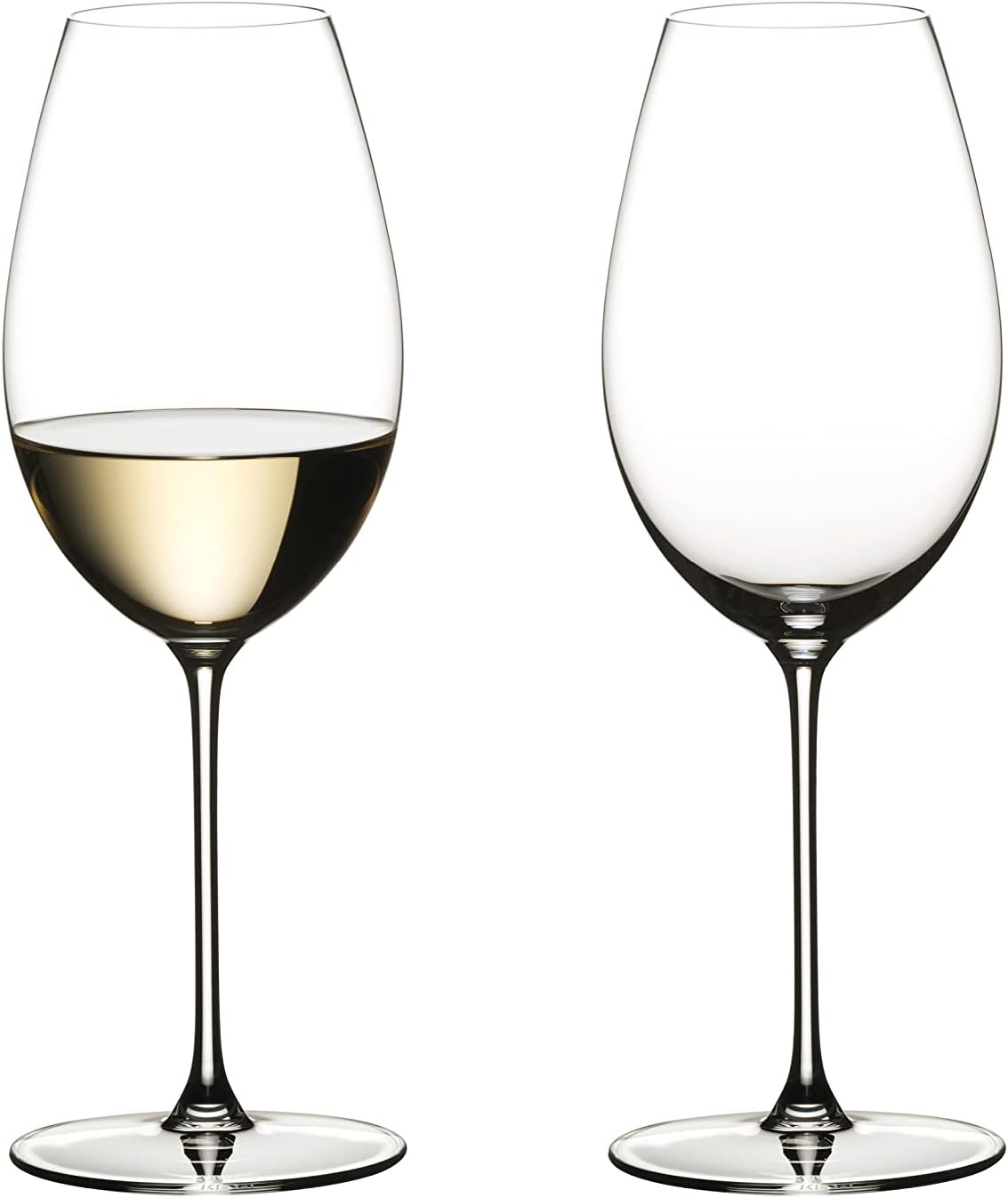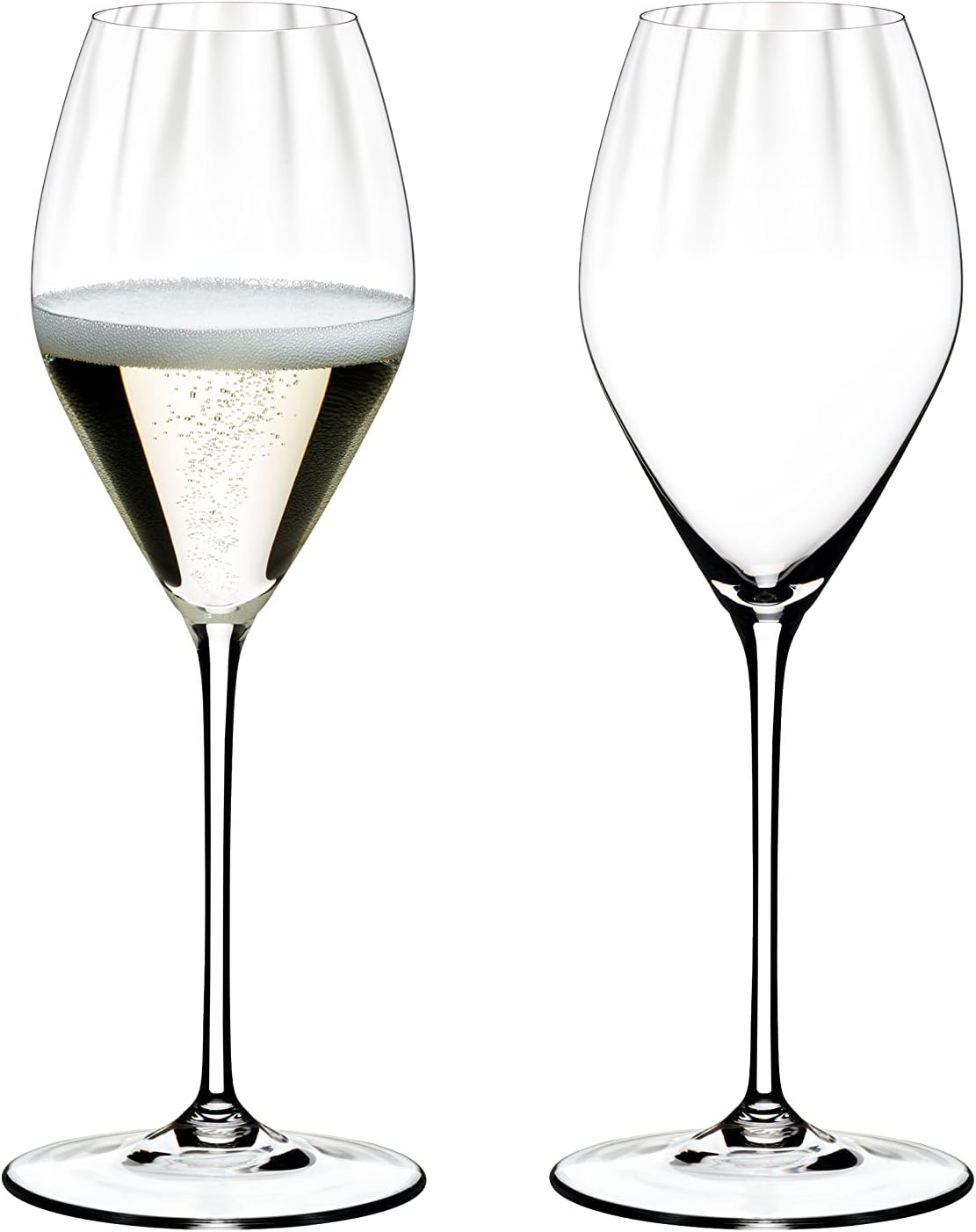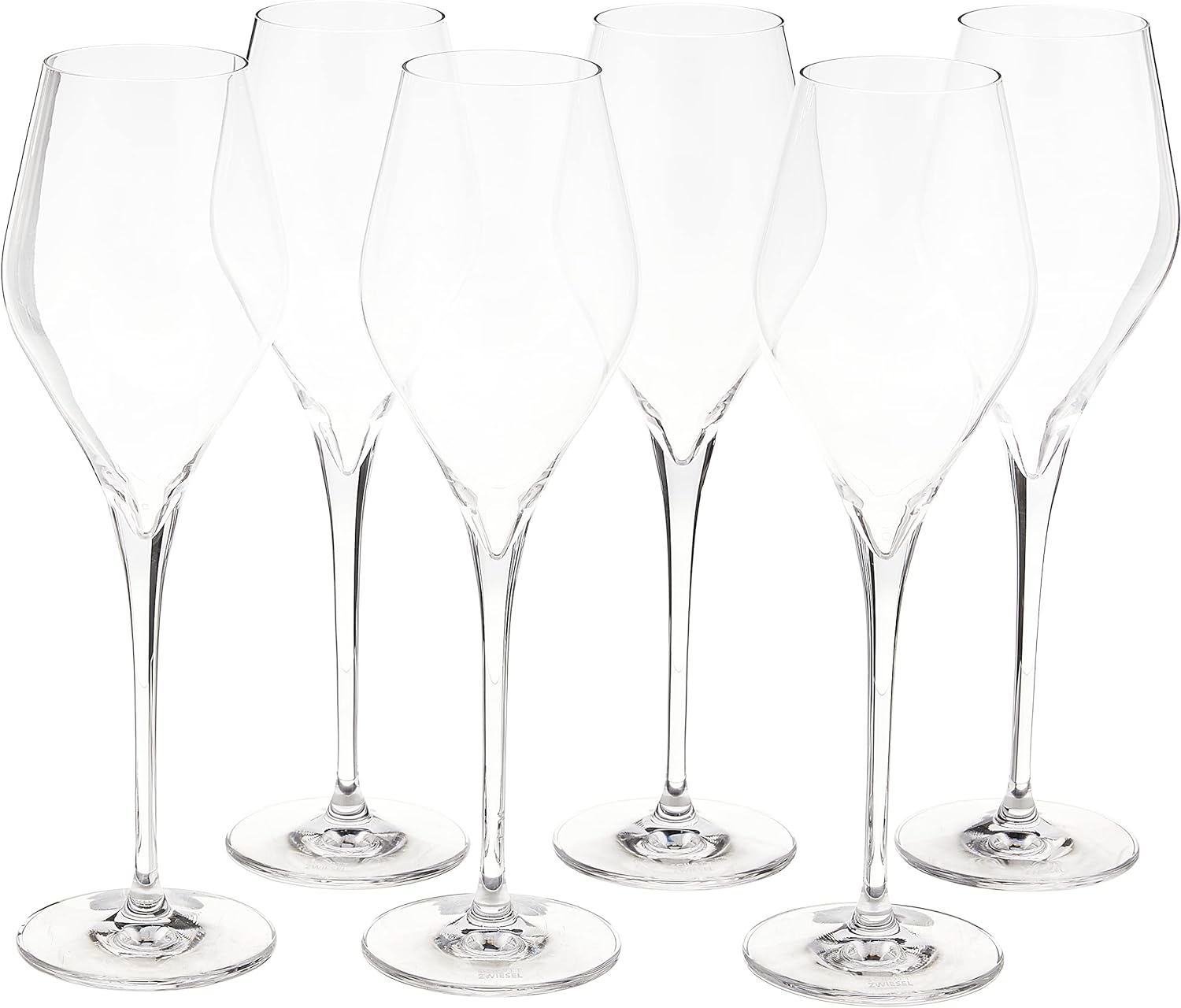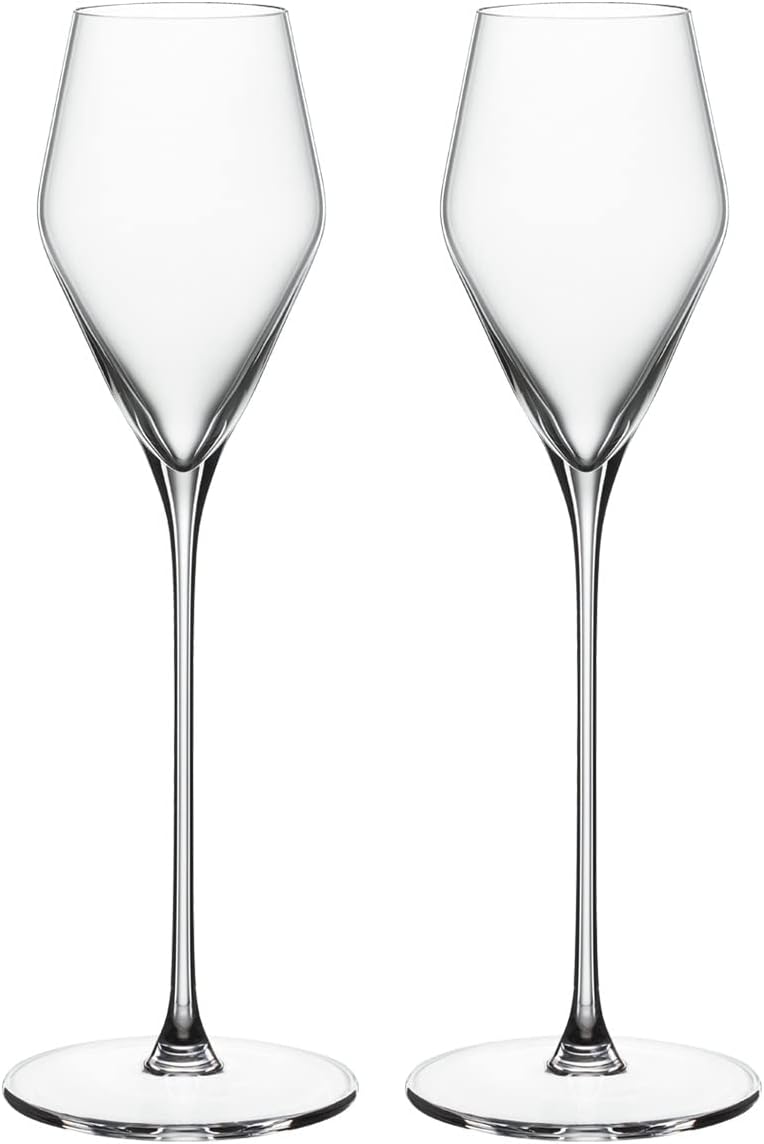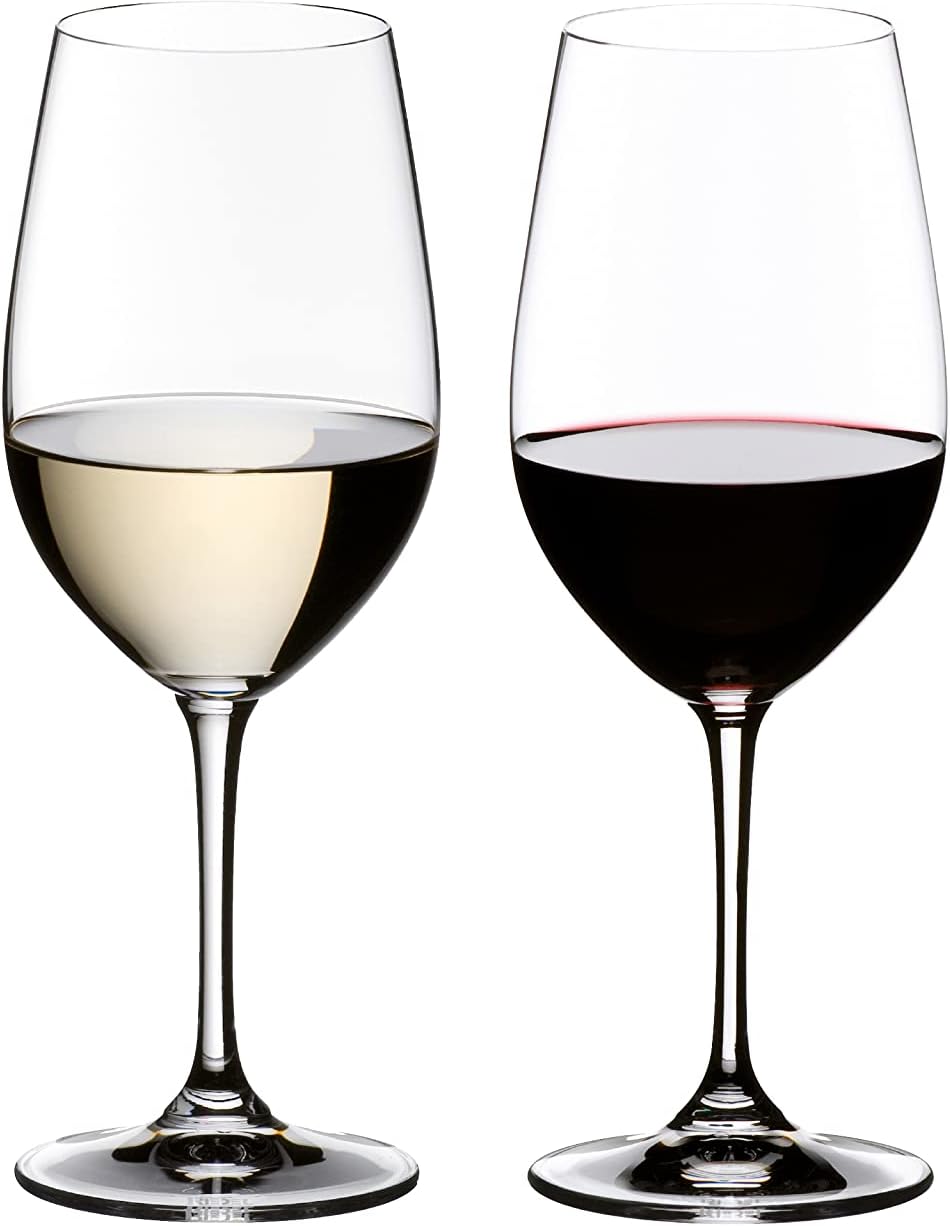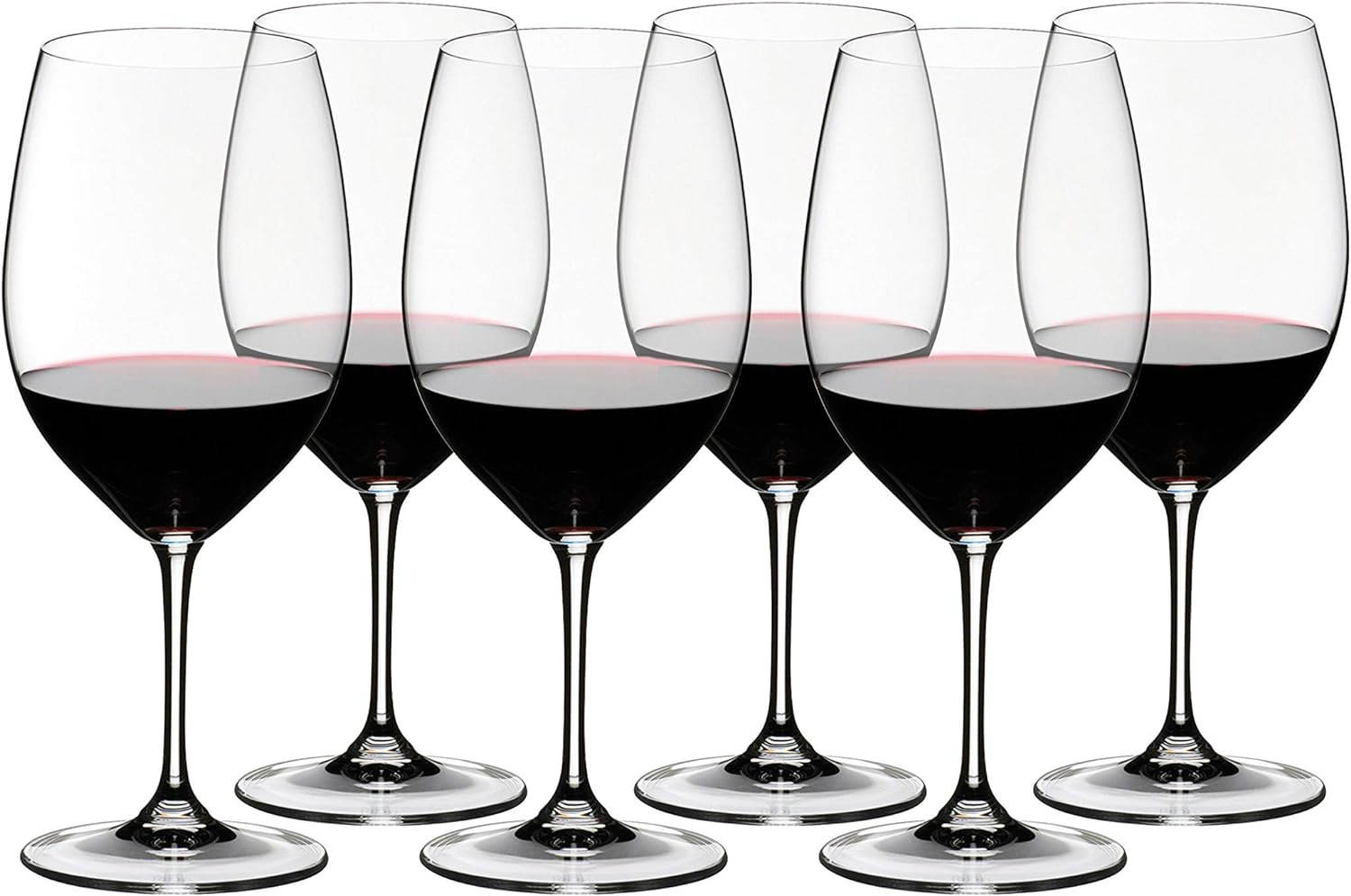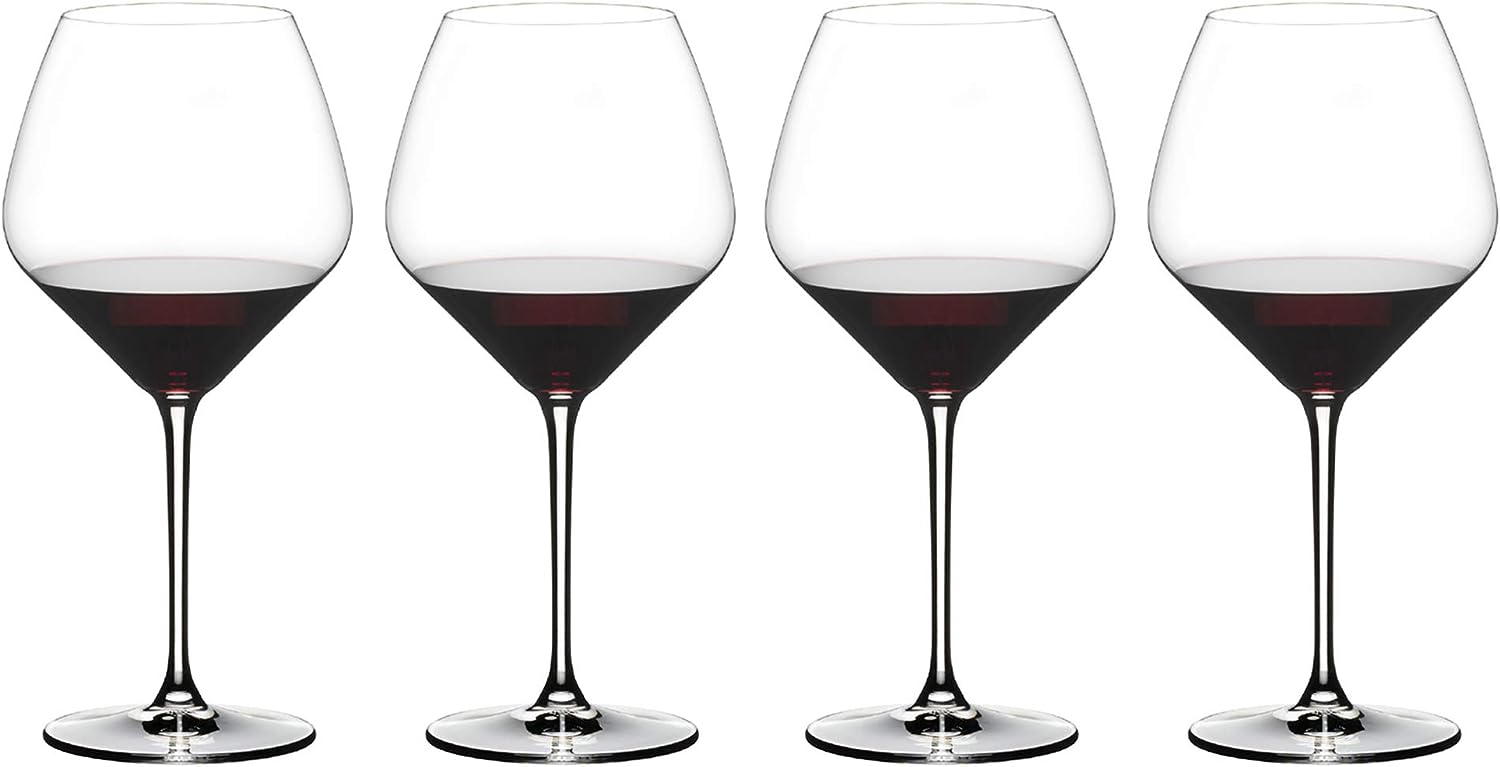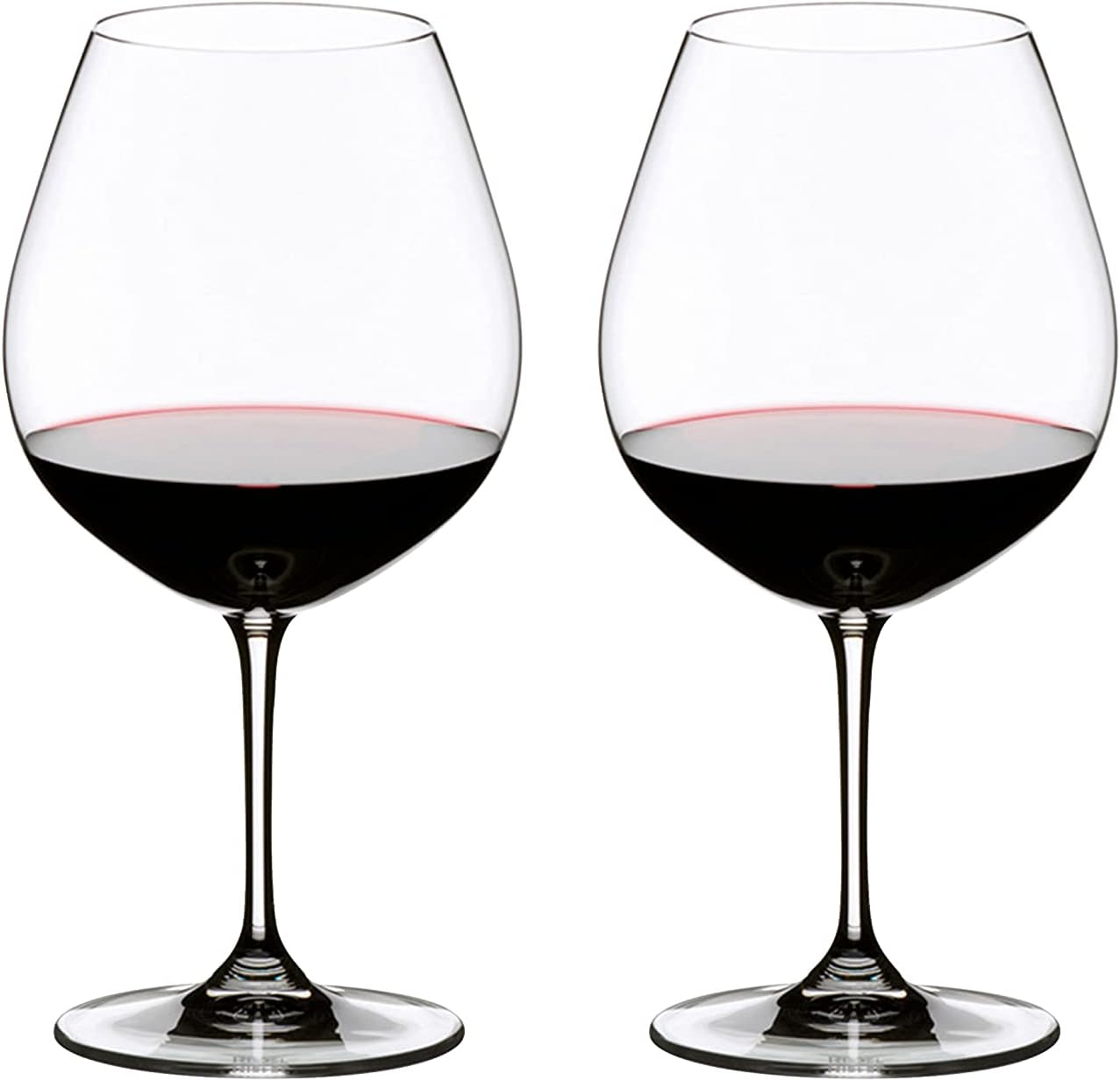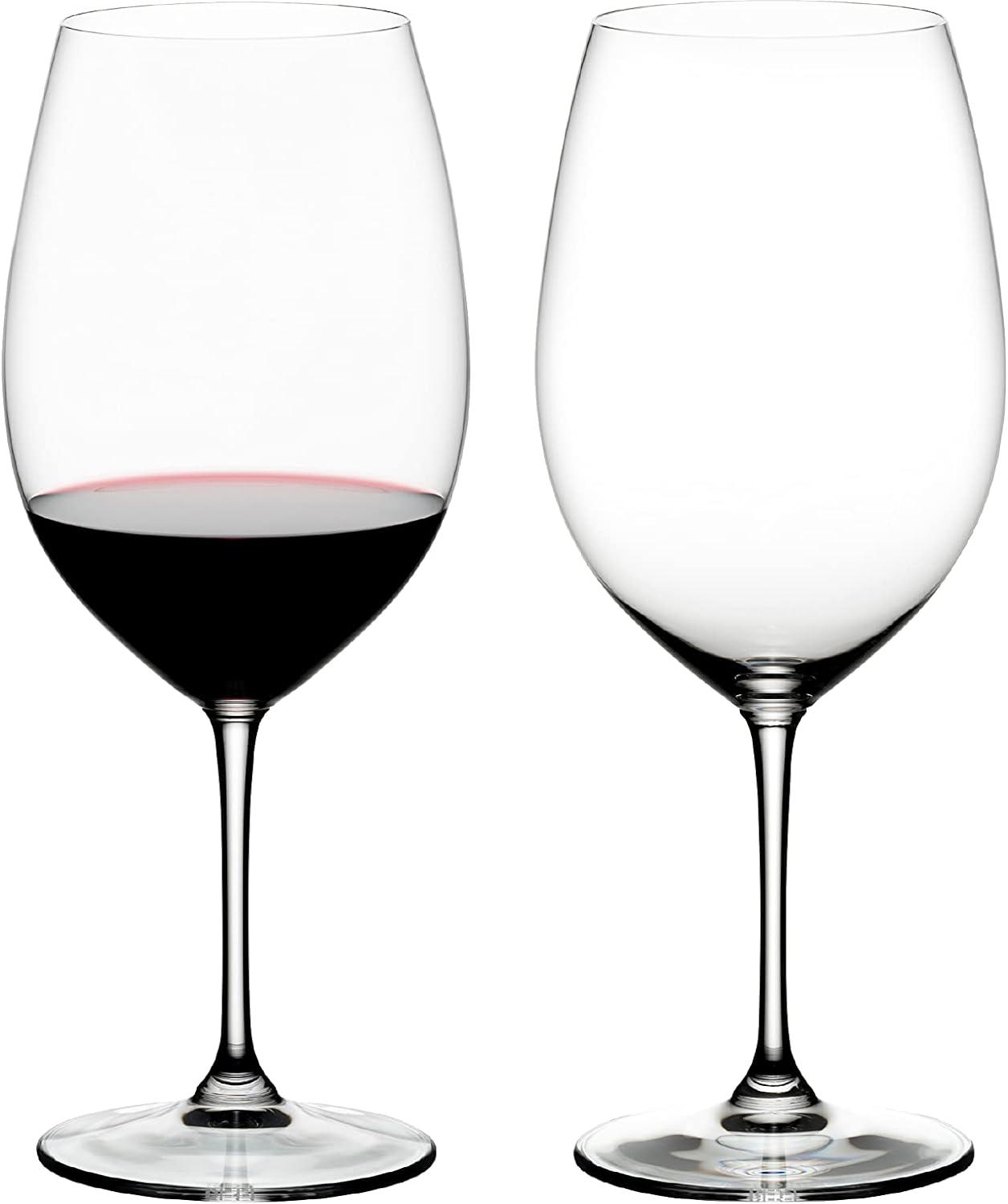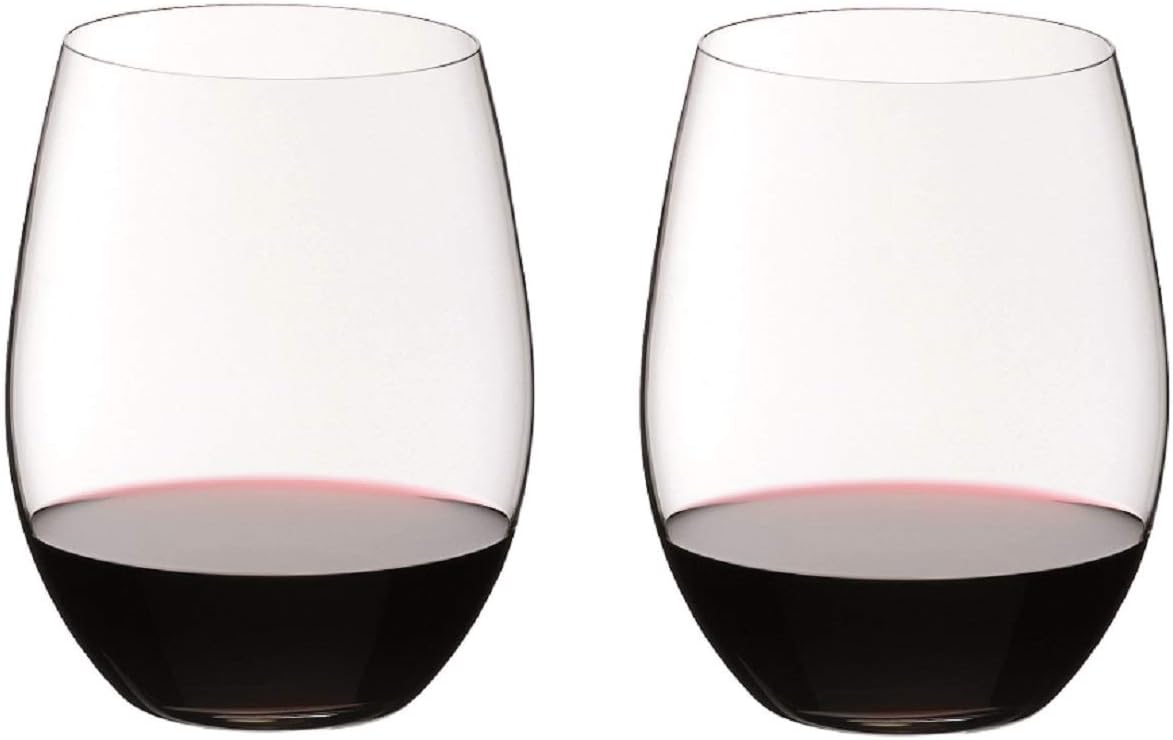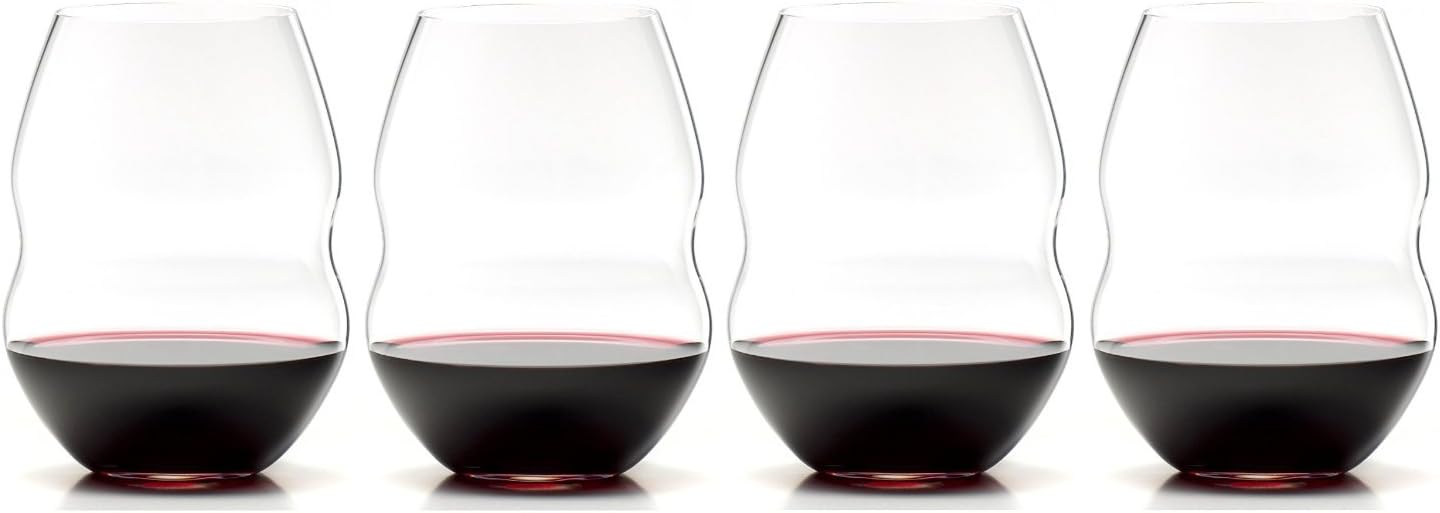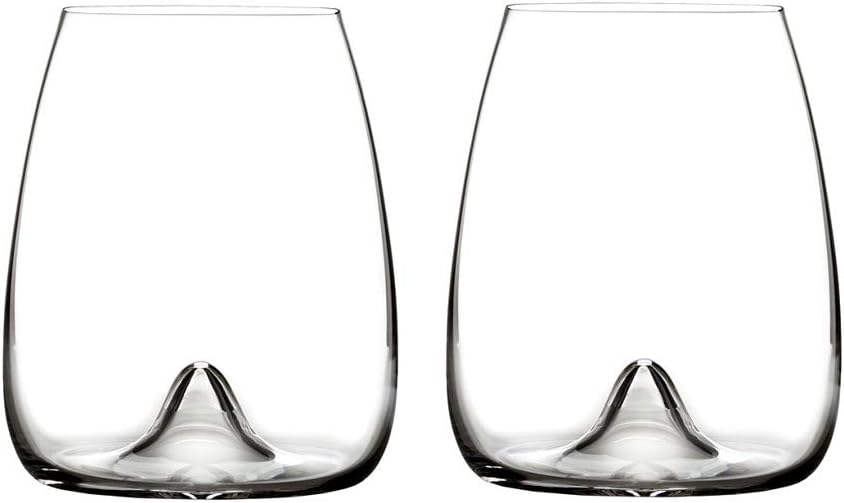Red Wine Glass vs. White Wine Glass: Key Differences Explained

When it comes to the world of wine, the vessels we choose to consume our favorite varietals from can significantly impact the overall tasting experience. Each type of wine—be it red, white, or sparkling—has specific glassware designed to enhance its unique characteristics. But what is the difference between red and white wine glasses? The difference between red and white wine glasses lies in their design, shape, type and size, meticulously crafted to enhance the sensory experience of red or white wine. Glasses designed specifically for red and white wines aren’t just a matter of aesthetic preference; they are engineered to enhance the unique characteristics of each type of wine. In this article, we will unravel the key differences in greater detail, shedding light on the science and art behind these essential tools for wine appreciation.
What is a red wine glass?
As the appreciation for wine evolved, so did the tools and vessels used to serve and enjoy it. Among these, the red wine glass holds a special place. Its design, shape, and size have been meticulously crafted to enhance the sensory experience of drinking red wine.
Design and characteristics
The design of a red wine glass is not arbitrary; it is the result of centuries of experimentation and refinement. Several key design elements contribute to its effectiveness in enhancing the red wine-drinking experience:
- Shape and Size: Red wine glasses are characterized by their larger, rounder bowls compared to their white wine counterparts. This design allows for greater oxidation, which can enhance the complexity and depth of red wines. The wider opening also facilitates the release of more robust aromas, which are often more pronounced in red wines.
- Bowl Shape: The bowl of a red wine glass is typically broader and rounder than that of a white wine glass. This shape allows for greater contact between the wine and the air, facilitating the release of aromatic compounds. Additionally, the wider bowl provides more space for swirling the wine, which can help aerate it and unlock its full range of flavors and aromas.
- Rim Diameter: The rim diameter of a red wine glass is usually wider than that of a white wine glass. A wider rim allows for a more expansive aromatic experience, as it directs the wine’s aromas toward the nose more effectively. This is particularly important for red wines, which often have more complex and robust aromas than white wines.
- Stem and Base: Similar to white wine glasses, red wine glasses feature a stem that serves both functional and aesthetic purposes. By holding the glass by the stem, you avoid warming the wine and maintain its optimal temperature. The base of a red wine glass is typically broad and stable, ensuring stability and balance.
- Design: The design of a red wine glass is not merely a matter of aesthetics; it is grounded in scientific principles that aim to optimize the sensory experience. Understanding these principles can deepen your appreciation for the complexities of red wine and the role that glassware plays in enhancing its enjoyment.
Functionality
- Aeration: The larger bowl of a red wine glass provides ample space for swirling, a process that exposes the wine to oxygen and promotes aeration. This aeration can soften tannins and volatilize aromatic compounds, revealing the wine’s full range of flavors and aromas.
- Temperature Control: Red wines are generally best served at slightly warmer temperatures than white wines, typically between 55°F and 68°F (13°C and 20°C). The design of a red wine glass helps to maintain these temperatures while allowing the wine to breathe and develop.
- Flavor Concentration: The wider rim of a red wine glass allows for a more expansive distribution of wine across the palate, facilitating the perception of complex flavors. This is particularly important for red wines, which often exhibit a broader range of flavors and textures compared to white wines.
- Oxidation and Flavor Development: The larger, rounder bowl of a red wine glass promotes greater oxidation, a process that can soften tannins and enhance flavor complexity. As the wine interacts with oxygen, volatile compounds are released, revealing secondary and tertiary aromas and flavors.
- Mouthfeel and Texture: The shape of the glass can influence the perception of mouthfeel and texture in the wine. A wider rim allows for a broader dispersion of the wine across the palate, creating a more harmonious integration of flavors and a smoother, more luxurious mouthfeel.
- Visual Presentation: Finally, the design of a red wine glass can enhance the visual presentation of the wine. The deep, rich colors of red wines can be fully appreciated in a glass that showcases these characteristics, allowing you to fully engage with the wine on multiple sensory levels.
What is a white wine glass?
A white wine glass is a meticulously designed vessel that enhances the sensory experience of drinking white wine. From its U-shaped bowl and tapered rim to its functional stem and base, every aspect of the glass is carefully considered to optimize the wine’s aroma, flavor, and temperature.
Design and characteristics
- Shape and Size: White wine glasses typically have a U-shaped bowl that is narrower and more upright than that of red wine glasses. This design serves to preserve the delicate aromas and flavors of white wines, which are generally more subtle than their red counterparts. The narrower bowl also helps to maintain cooler temperatures, as white wines are best served chilled.
- Rim: The rim of a white wine glass is often slightly tapered or rolled inward. This design directs the wine to the front and sides of the tongue, enhancing the perception of acidity and fruitiness while minimizing the impact of any bitterness or alcohol.
- Stem and Base: The stem of a white wine glass serves both functional and aesthetic purposes. By holding the glass by the stem, you avoid warming the wine with the heat from your hand. Additionally, the stem allows you to swirl the wine, releasing its aromas and flavors. The base is typically broad and stable, ensuring that the glass remains upright on a flat surface.
- Design: The design of a white wine glass is not just a matter of aesthetics; it is grounded in scientific principles that aim to optimize the sensory experience. The shape and size of the glass affect how the wine interacts with air and how it is perceived by the senses.
Functionality
- Aeration: Swirling white wine in a glass exposes it to oxygen, which can help to open up its aromas and flavors. The U-shaped bowl of a white wine glass provides ample space for swirling, allowing the wine to aerate effectively.
- Temperature Control: White wines are generally best served at cooler temperatures, typically between 45°F and 55°F (7°C and 13°C). The design of a white wine glass helps to maintain these cooler temperatures by minimizing the surface area exposed to the air and by directing the wine towards the center of the glass where it is less likely to warm up.
- Aroma Concentration: The narrow opening of a white wine glass concentrates the aromas as you bring the glass to your nose, allowing you to fully appreciate the wine’s bouquet. This is particularly important for white wines, which often have more delicate and nuanced aromas than red wines.
- Surface Area and Evaporation: The narrower bowl of a white wine glass reduces the surface area exposed to the air, minimizing evaporation and helping to maintain cooler temperatures. This is crucial for preserving the volatile compounds that contribute to the wine’s aroma and flavor.
- Acidity and Perception: The shape of the glass can also influence the perception of acidity in the wine. By directing the wine to specific areas of the tongue, the glass can accentuate or mitigate the sensation of acidity, creating a more balanced and enjoyable tasting experience.
- Visual Presentation: Finally, the design of a white wine glass can also enhance the visual presentation of the wine. The clarity and color of white wines can be fully appreciated in a glass that showcases these characteristics, allowing you to fully engage with the wine on multiple sensory levels.
What is the difference between a white wine glass and a red wine glass?
Red wine glasses and white wine glasses are designed differently based on the wine they are meant to hold. The main difference between red and white wine glasses is – the shape. White wine glasses typically have smaller bowls and narrower openings than red wine glasses. Additionally, the walls of a white wine glass bowl will be less curved.
Red wine glasses are typically taller and have a larger bowl compared to white wine glasses. This is because red wines are usually bolder and have complex flavors and aromas that need more space to develop. Therefore, a larger glass allows all the rich flavors and aromas of red wine to emerge.
Let’s list all the differences:
Shape and Size
Red Wine Glass:
- Bigger Bowl: Red wine glasses typically have a larger bowl compared to white wine glasses. This design allows for better aeration, which is essential for releasing the wine’s intricate flavors and aromas.
- Wider Opening: The wider opening of a red wine glass ensures that the wine comes into contact with more air, promoting oxidation and softening tannins in red wines.
- Tapered Rim: Often, red wine glasses have a slightly tapered rim that concentrates the aromas, directing them towards the nose.
White Wine Glass:
- Smaller Bowl: White wine glasses usually have a smaller bowl to preserve the wine’s delicate aromas and maintain cooler temperatures.
- Narrower Opening: The narrower opening minimizes the wine’s contact with air, preserving its freshness and acidity.
- Straight or Slightly Flared Rim: The rim of a white wine glass is generally straight or slightly flared to direct the wine towards the front of the palate, highlighting its crispness and acidity.
Material
Both red and white wine glasses are commonly made from high-quality crystal or glass. However, some glasses designed for specific varietals or premium wines may be made from lead crystal, which can enhance the wine’s clarity and brilliance. It’s essential to choose glasses that are free from imperfections and have a smooth, thin rim to ensure a pleasant drinking experience.
Stemmed vs. Stemless
One of the most noticeable differences is the length of the stem. Typically, white wine glasses feature longer stems than red wine glasses. This design allows the drinker to hold the glass without affecting the wine’s temperature. White wines are best served chilled, and the longer stem of a white wine glass helps to keep the wine at the optimal temperature. By holding the glass further away from the bowl, the drinker can enjoy their wine without the risk of warming it up.
Stemmed Glasses: Traditional wine glasses feature a stem, which allows you to hold the glass without warming the wine with the heat from your hand. Additionally, the stem prevents fingerprints on the bowl, ensuring that you can appreciate the wine’s color and clarity fully.
Stemless Glasses: Stemless wine glasses have gained popularity for their modern appearance and stability. While they may not offer the same temperature-controlling benefits as stemmed glasses, they are a practical option for casual settings and outdoor events. Stemless glasses are more suitable for red wines since they aren’t affected by slightly warmer, room temperatures.
Purpose and Functionality
Red Wine Glasses: Designed to enhance the robust flavors and aromas of red wines, these glasses are ideal for varietals such as Cabernet Sauvignon, Merlot, Malbec, Syrah and others. The larger bowl and wider opening allow the wine to breathe, revealing its full complexity and depth. Red wine glasses are designed to enhance the wine’s aroma, similar to a decanter.
White Wine Glasses: Tailored to showcase the crispness and freshness of white wines, these glasses are perfect for famed varietals like Chardonnay, Sauvignon Blanc, Viognier, Pinot Grigio and others. The smaller bowl and narrower opening help preserve the wine’s delicate aromas and maintain its vibrant acidity.
Cleaning and Maintenance
To ensure the longevity of your wine glasses and maintain their optimal performance, it’s crucial to handle them with care. Always hand wash your wine glasses using a mild detergent and lukewarm water, avoiding abrasive sponges or dishwashers that can cause scratches or damage. After washing, rinse the glasses thoroughly and dry them with a soft, lint-free cloth to prevent water spots and maintain their clarity.
Is it necessary to use different glasses for different wines?
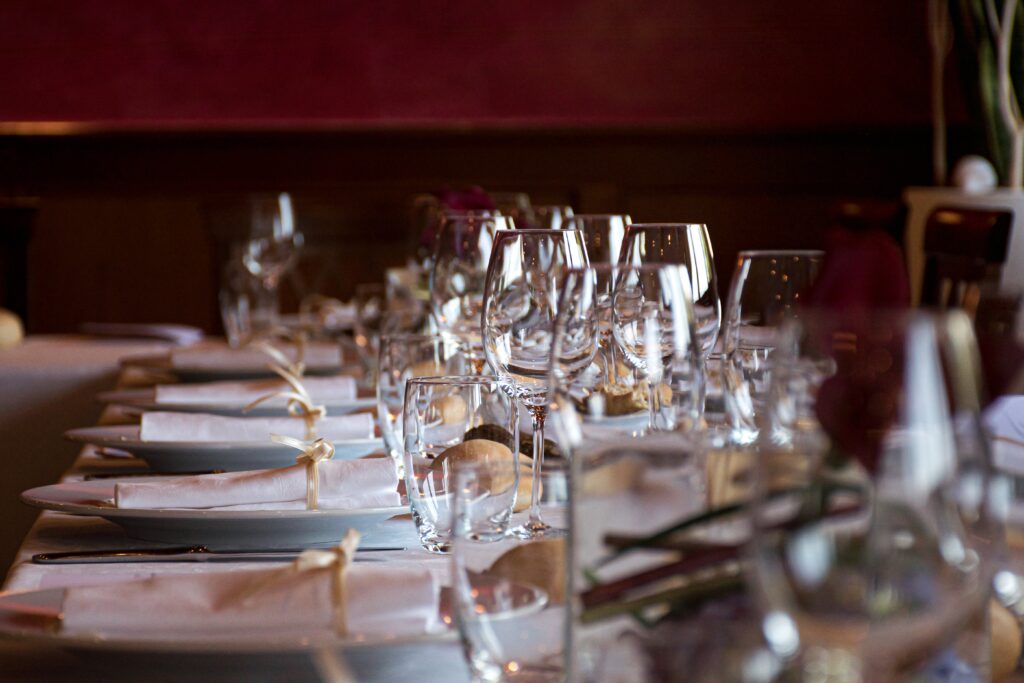
Different wines can certainly benefit from being served in specific types of glasses due to the impact of the glass shape on the tasting experience.
For example, red wines typically have bolder flavors and aromas, and thus, they benefit from glasses with larger bowls that allow for aeration and the release of these aromas.
On the other hand, white wines often have more delicate aromas and flavors, and glasses with narrower bowls help to concentrate these subtler characteristics.
However, while using different glasses can enhance the sensory experience of wine, it is not strictly necessary for enjoying wine. A regular glass can still provide a satisfactory wine-drinking experience, but the primary purpose of specialized wine glasses is to optimize the sensory aspects of wine, such as aroma, flavor, and mouthfeel.
Some manufacturers, such as Zalto Denkart and Schott Zwiesel, offer universal glass sets that can be used for any type of wine. However, using a universal glass may not provide the same flavor and aroma experience as using the appropriate red or white wine glass.
As this scientific study concludes, experts agree that the shape of the wine glass significantly affects the nose and finish of the wine.
Moreover, the temperature at which wine is served also plays a crucial role in the choice of glassware. For instance, red wines are often served slightly below room temperature, and glasses with stems help to maintain this temperature by preventing the heat from one’s hand from warming the wine. Similarly, sparkling wines like Champagne are typically served at a lower temperature in flutes or narrow glasses to preserve the bubbles and effervescence.
In conclusion, while using different glasses for different wines can enhance the sensory experience by optimizing aroma, flavor, and temperature, the choice of glassware depends on personal preferences and the desired wine-drinking experience.
Different types of wine glasses
There are different types of glasses designed for serving red and white wine that are specifically tailored to enhance the drinking experience. Here are the different types of glasses for red and white wine.
Types of white wine glasses
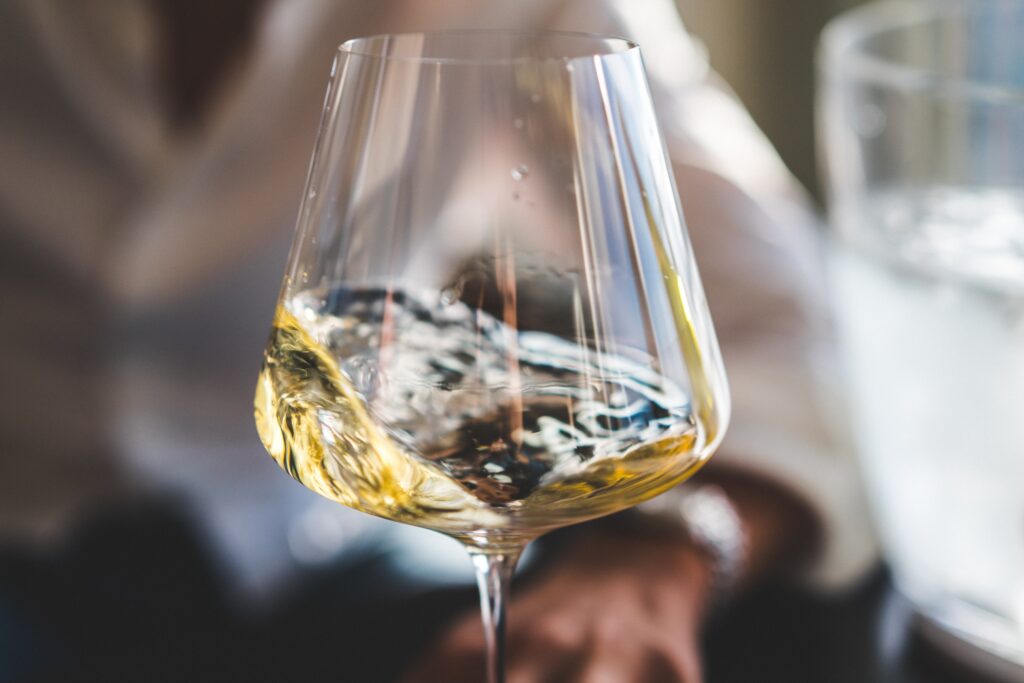
To fully appreciate the subtle differences between various white wines, it is important to serve them in the appropriate glassware. White wine glasses are usually smaller than red wine glasses as this shape helps to maintain a cooler temperature and preserve floral aromas.
1. Standard White Wine Glass
The standard white wine glass is a versatile option suitable for a wide variety of white wines, including Chardonnay, Sauvignon Blanc, and Pinot Grigio. This glass typically features a U-shaped bowl that tapers slightly towards the rim. The design allows for proper aeration and concentrates the wine’s aromas, enhancing the tasting experience.
Key Features:
- U-shaped bowl for aeration
- Tapered rim to capture aromas
- Versatile design for various white wines
Use this glass for everyday use and lighter white wine varieties.
|
Ideal for both red and white wines, this glass is a perfect starting point for your Zalto collection. Despite being feather-light, it is dishwasher-safe and 100% lead-free. |
The "One for All" crystal glass designed to enhance the aromas and flavors of white, red, sparkling, and dessert wines, providing a unique drinking experience for wine lovers. |
High fashion, sharp lines, geometric look; moderate stem height, excellent balance. Suggested wine varietals: Cabernet Sauvignon, Merlot, Syrah, Zinfandel, Malbec, Barolo, Chardonnay, Viognier. |
Perfect for full-bodied white and young red wines, crafted from Tritan crystal glass. The collection features a geometric, high-fashion design with sharp lines, moderate stem height, and excellent balance. |
Ideal for both red and white wines, this glass is a perfect starting point for your Zalto collection. Despite being feather-light, it is dishwasher-safe and 100% lead-free.
The "One for All" crystal glass designed to enhance the aromas and flavors of white, red, sparkling, and dessert wines, providing a unique drinking experience for wine lovers.
High fashion, sharp lines, geometric look; moderate stem height, excellent balance. Suggested wine varietals: Cabernet Sauvignon, Merlot, Syrah, Zinfandel, Malbec, Barolo, Chardonnay, Viognier.
Perfect for full-bodied white and young red wines, crafted from Tritan crystal glass. The collection features a geometric, high-fashion design with sharp lines, moderate stem height, and excellent balance.
2. Chardonnay Glass
Chardonnay, a popular white wine known for its rich and complex flavors, benefits from a specific type of glass designed to enhance its characteristics. The Chardonnay glass is characterized by a wider bowl and a slightly shorter stem than traditional white wine glasses. This design accentuates the wine’s creamy texture and emphasizes its aromatic profile.
Key Features:
- Wide bowl for enhanced aroma and flavor
- Shorter stem for stability
- Ideal for oaked and unoaked Chardonnay
Use this glass for Chardonnay, Semillon, Viognier, and other full-bodied white wines.
|
$115.03 ($28.76 / Count)
|
N/A
|
$79.00 ($39.50 / Count)
|
3. Sauvignon Blanc Glass
Sauvignon Blanc, a crisp and refreshing white wine, requires a glass that showcases its vibrant acidity and citrus notes. The Sauvignon Blanc glass is typically smaller with a narrower bowl and a more pronounced lip. This design directs the wine to the tip of the tongue, emphasizing its acidity and enhancing the overall balance of flavors.
Key Features:
- Narrower bowl for directing wine to the tip of the tongue
- Pronounced lip for capturing aromas
- Ideal for young and aromatic Sauvignon Blanc
Use this glass for Sauvignon Blanc, white Bordeaux, Fume Blanc, Vinho Verde, Chenin Blanc, Muscadet, Muscat Blanc, and Pinot Grigio.
4. Riesling Glass
Riesling, a versatile white wine known for its floral aromas and vibrant acidity, benefits from a specialized glass that accentuates its delicate nuances. The Riesling glass is tall and narrow with a slightly flared rim, allowing the wine to express its aromatic complexity while preserving its crisp acidity.
Key Features:
- Tall and narrow design for aromatic expression
- Flared rim for controlled pouring
- Ideal for dry, off-dry, and sweet Riesling
Use this glass for Riesling, Pinot Blanc, Muscat Blanc, Gewürztraminer and Torrontés.
|
|
$89.00 ($44.50 / Count)
|
5. Sparkling Wine Flute
While not exclusive to white wines, the sparkling wine flute is worth mentioning due to its iconic design and popularity. The flute’s elongated shape and narrow bowl preserve the wine’s effervescence and showcase its lively bubbles. This glass is ideal for sparkling white wines such as Champagne, Prosecco, and Cava.
Key Features:
- Elongated shape for preserving effervescence
- Narrow bowl to showcase bubbles
- Ideal for sparkling white wines
Use this glass for sparkling wines like Champagne, Cava, Prosecco, and Franciacorta.
|
Ideal for showcasing a bouquet of Champagne. This light and well-balanced design accentuates the complexity and richness of vintage Champagne and sparkling wines. |
We admire the elegant and sturdy design of this glass, noting the built-in pour measure. The stoutness of the glasses is appreciated as it facilitates easier pouring. |
Featuring a 'sparkling point' for champagne bubbles, its egg-shaped design allows complex layers to intensify and grow, with a larger rim diameter releasing bubbles in a unique way. |
Laser-etched glass for continuous bubbles. Patented for breakage, chipping, and scratch resistance, as well as thermal shock resistance. |
Ideal for showcasing a bouquet of Champagne. This light and well-balanced design accentuates the complexity and richness of vintage Champagne and sparkling wines.
We admire the elegant and sturdy design of this glass, noting the built-in pour measure. The stoutness of the glasses is appreciated as it facilitates easier pouring.
Featuring a 'sparkling point' for champagne bubbles, its egg-shaped design allows complex layers to intensify and grow, with a larger rim diameter releasing bubbles in a unique way.
Laser-etched glass for continuous bubbles. Patented for breakage, chipping, and scratch resistance, as well as thermal shock resistance.
6. Dessert white wine glass
The small rim of a wine glass plays a crucial role in how we perceive the flavors of wine. By guiding the wine towards the center and back of the tongue, it helps to avoid overwhelming the palate with the concentrated sweetness of the wine. This is because the front of the tongue is more sensitive to sweet flavors, while the back of the tongue is more sensitive to bitter and acidic flavors.
Key Features:
- Directs wine to specific areas of the tongue, enhancing flavor perception.
- Prevents overwhelming sweetness by targeting the center and back of the tongue.
- Ideal for dessert white and red wines
Use this glass for white and red dessert wine styles.
|
$64.99 ($32.50 / Count)
|
$72.79 ($12.13 / Count)
|
$136.51 ($34.13 / Count)
|
Whether you’re sipping on a crisp Sauvignon Blanc or indulging in a rich Chardonnay, selecting the appropriate glassware can elevate your enjoyment and deepen your appreciation for the world of white wines.
Remember, the key is to match the glass’s shape and design with the specific wine’s characteristics to unlock its full potential.
Types of red wine glasses
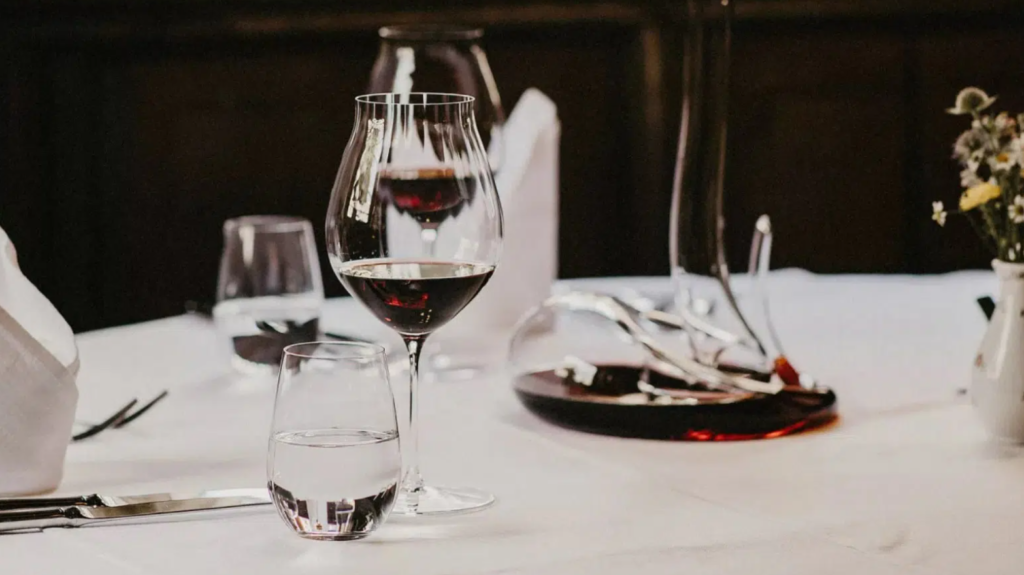
Red wine glasses are designed with specific features that enhance the wine tasting experience. Generally, these glasses have a rounded shape with a larger bowl and a wider opening. The larger bowl allows more wine to come in contact with the air, which helps to release its aroma and flavor.
The wider opening is also important as it allows the wine to breathe and reduces the bitterness of tannins or spicy flavors. Additionally, the shape of the glass helps to direct the wine to the back of the mouth, where it can be fully appreciated.
All these factors combined result in a smoother and more enjoyable taste.
While there is a general design principle that applies to red wine glasses, there are also variations tailored to specific types of red wines. Some of the most common types of red wine glasses include as followed.
1. Standard Red Wine Glass
A characteristic of a standard red wine glass is its larger bowl compared to that of a white wine glass. The larger bowl allows for more aeration of the wine, which can help to release the wine’s aromas and flavors.
Additionally, the wider opening of the glass helps to direct the wine to the front of the mouth, enhancing the tasting experience by emphasizing the fruit and acidity of the wine.
Key features:
- Versatile shape with a medium-sized bowl
- Suitable for a variety of red wines
- Accommodates a range of wine styles
- Easy to handle and store
Use this glass for everyday use and lighter red wine varieties.
Riesling and Zinfandel glass from the well-established Vinum collection. Its shape enhances the characteristic bouquet of fruity red wines or floral white wines.
2. Bordeaux Glass
A characteristic of Bordeaux glasses, which are designed specifically for Bordeaux wines, is their large bowl with a tall, straight-sided shape.
This design allows for ample aeration and a larger surface area, which helps to enhance the complex aromas and flavors of full-bodied Bordeaux wines.
The wide bowl also provides enough room to swirl the wine, releasing its bouquet and allowing it to breathe effectively.
Key features:
- Tall with a broad bowl
- Straight sides that taper slightly toward the rim
- Enhances aromas
- Directs wine to the back of the mouth for a balanced taste
Use this glass for Bordeaux wines, Cabernet Sauvignon, and Merlot.
3. Burgundy Glass
A characteristic of Burgundy glass is its wide bowl shape. This wide bowl allows for ample aeration, which enhances the wine’s aromas and flavors.
The broader surface area also helps in capturing the intricate nuances of the wine, particularly those found in the complex and delicate Pinot Noir grape varieties.
The wider opening of the glass further directs the wine to the tip of the tongue, highlighting its fruit-forward characteristics.
Key features:
- Wide bowl with a larger surface area
- Rounded shape
- Shorter stem compared to Bordeaux glasses
- Allows for aeration, revealing delicate aromas
- Directs wine to the tip of the tongue, enhancing fruit flavors
Use this glass for Pinot Noir, Nebbiolo and aged Chardonnay.
|
Ideal for gifting or personal use, these diamond-shaped glasses enhance the flavor and taste of Pinot Noir wines. Renowned for their extreme contours, we value the glasses for their quality, classy appearance, and affordability. |
Designed for New World Pinot Noir wines. It's an essential addition to any discerning wine enthusiast accessory, demonstrating that the joy of wine consumption begins with the right glass. |
This glass channels the wine onto the tongue's sweet perception zone, accentuating rich fruit and balancing high acidity. The spacious bowl captures the wine's nuanced aroma. |
Ideal for gifting or personal use, these diamond-shaped glasses enhance the flavor and taste of Pinot Noir wines. Renowned for their extreme contours, we value the glasses for their quality, classy appearance, and affordability.
Designed for New World Pinot Noir wines. It's an essential addition to any discerning wine enthusiast accessory, demonstrating that the joy of wine consumption begins with the right glass.
This glass channels the wine onto the tongue's sweet perception zone, accentuating rich fruit and balancing high acidity. The spacious bowl captures the wine's nuanced aroma.
4. Cabernet Sauvignon Glass
A Cabernet Sauvignon glass is characterized by its large bowl, which facilitates ample aeration of the wine and enhances the release of its complex aromas.
The slightly tapered rim concentrates these aromas towards the drinker’s nose, enriching the sensory experience.
Its long stem ensures that the wine remains at the optimal temperature, preventing it from being warmed by the hands.
Key features:
- Similar to Bordeaux but with a slightly larger bowl
- Wide opening
- Emphasizes bold flavors and aromas
- Enhances the wine’s structure and balance
Use this glass for Cabernet Sauvignon, Malbec and Zinfandel.
|
$79.00 ($39.50 / Count)
|
|
5. Syrah/Shiraz Glass
The Syrah/Shiraz wine glass is distinctively designed to accentuate the unique characteristics of this particular varietal.
Characterized by a generous bowl, the glass facilitates ample swirling, crucial for releasing the wine’s intricate aromas. Its slightly tapered rim concentrates these aromas, directing them towards the drinker’s nose, enhancing the olfactory experience.
The narrower mouth further refines this concentration, ensuring the flavors are focused on the palate.
Key features:
- Shorter than Bordeaux and Burgundy glasses
- Wide bowl with a slightly narrower rim
- Intensifies the wine’s spicy and fruity notes
- Offers a more concentrated aroma experience
Use this glass for Syrah, Petite Sirah and Grenache.
|
The Syrah glass accentuates tannins, achieving a perfect balance with the intensely concentrated fruit. We appreciate the glass's appearance, taste, and value. |
The glass is tailored for the classic aromas of toast and black olives found in Syrah grape wines. We appreciate its graceful shape, lightweight, pleasing taste, and size. |
The Syrah glass accentuates tannins, achieving a perfect balance with the intensely concentrated fruit. We appreciate the glass's appearance, taste, and value.
The glass is tailored for the classic aromas of toast and black olives found in Syrah grape wines. We appreciate its graceful shape, lightweight, pleasing taste, and size.
6. Stemless Red Wine Glass
A characteristic of a stemless red wine glass is its design, which lacks the traditional stem found on many wine glasses.
Stemless glasses typically have a broader base, which provides stability on flat surfaces. This design choice is often appreciated for its modern aesthetic and practicality, as it reduces the risk of tipping over compared to stemmed glasses. It’s worth noting that holding a stemless glass by its bowl may warm the wine more quickly due to the heat from one’s hand. This is fine for reds anyway.
Key features:
- Bowl-shaped design without a stem
- Modern and practical
- Durable and less prone to breakage
- Easy to store and clean
Use this glass for casual gatherings and outdoor events.
|
We love this stemless glass for its quality, easy cleaning, durability, comfort, and attractive appearance. It's easy to hand wash or use in the dishwasher, offering great value. |
"O" is the perfect everyday and all-occasion glass—fun, comfortable, trendy, and functional! |
The set of four, made from non-leaded crystal, features a curved body for easy handling and a rippled shape with subtle grooves, guiding the wine for effortless aeration. |
Crafted from the finest luxury crystal and ideal for casual events, these versatile and stylish stemless glasses offer the reassurance of fine crystal weight, are spill-resistant, and easy to store. |
We love this stemless glass for its quality, easy cleaning, durability, comfort, and attractive appearance. It's easy to hand wash or use in the dishwasher, offering great value.
"O" is the perfect everyday and all-occasion glass—fun, comfortable, trendy, and functional!
The set of four, made from non-leaded crystal, features a curved body for easy handling and a rippled shape with subtle grooves, guiding the wine for effortless aeration.
Crafted from the finest luxury crystal and ideal for casual events, these versatile and stylish stemless glasses offer the reassurance of fine crystal weight, are spill-resistant, and easy to store.
Choosing the right red wine glass is more than a matter of aesthetics; it’s about enhancing the sensory experience of enjoying wine. Whether you’re sipping a bold Cabernet Sauvignon or a delicate Pinot Noir, selecting the appropriate glassware can elevate your wine-drinking experience to new heights.
By understanding the unique features and benefits of each type of red wine glass, you can ensure that every sip is a moment of pure pleasure.
Conclusion
Choosing the right wine glass can significantly enhance your wine-tasting experience, allowing you to appreciate the unique characteristics and nuances of each varietal. Whether you prefer the bold flavors of red wines or the crispness of white wines, selecting the appropriate glassware is key to unlocking the full potential of your favorite wines.
By understanding the key differences between red wine glasses and white wine glasses, you can make informed decisions and elevate your wine-drinking pleasure to new heights.
Are you prepared to invest in this integral facet of wine connoisseurship and experience the epitome of proper wine tasting pleasure? Let us know in the comments bellow.
Our Expertise
Valentina Silovic is a sommelier and content creator with over a decade of experience in the wine industry.
For this article, she collaborated with Dario Drmac, a wine entrepreneur renowned for his innovative digital approach, and Nenad Trifunovic, an esteemed moderator, wine workshop educator, and dedicated advocate for wine-drinking culture.
Their combined experience and insights contribute significantly to the depth and authority of the content presented.
Want to meet the team, seek recommendations, and discover in-depth insights into our product testing and reviews? Click here now!


















